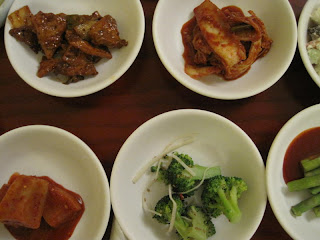A warm and gooey delight
A yummy serving of macaroni and cheese really makes for a satisfying meal. The Mixed Stew adds gruyere cheese to give regular macaroni and cheese some flavorful zing. Of course, there’s also a hefty amount of cheddar cheese in the mix. We also use whole wheat macaroni to inject more fiber and nutrition in every bite.
The Food Network provides the foundation for our rendition of macaroni and cheese.
Note: This recipe is big enough to bring to a potluck.
 What you will need:
What you will need:
1 large pot with lid
1 wooden spoon
1 colander
10 cups water
Kosher salt
1 quart heavy cream
2 garlic cloves, peeled and smashed whole
2 tablespoons Dijon mustard
1 14.5-oz. box whole wheat pasta
2 ½ cups gruyere, grated
1 1/4 cup cheddar, shredded
½ cup Parmesan, shredded finely
Worcestershire sauce to taste
Sriracha hot sauce
Panko mixed with crushed corn flakes
Freshly ground white pepper
Cooking container: 13 1/2 in X 9 5/8 in X 2 3/4 all-purpose aluminum roaster pan (use a large, sturdy cookie sheet to support the bottom through the baking process)
Cooking and Directions:
Bring water to boil in large pot. Add salt until it's almost like sea water. Pour in uncooked macaroni. Be careful to constantly stir the macaroni while (8-10 minutes) cooking to al dente. Next, reserve 1 cup of the liquid from the pot. Then pour the al dente macaroni into a colander and run cold water over pasta to stop the cooking process. Using the same pot, bring the cream, garlic, and reserved liquid to a simmer. Add mustard and 2 ½ cups Gruyere. Keep stirring so liquid stays smooth. Add pepper to taste. Add Parmesan and 1 cup of cheddar and keep stirring to keep liquid smooth. Add Worcestershire and sriracha sauce. Stir again and then taste for right seasoning and flavor. Carefully mix cooked macaroni into sauce. Remove the pot from heat and let the macaroni rest for 8 to 10 minutes so that pasta can absorb the flavors. Remove and discard garlic cloves if you desire. (We keep them in the dish.) Fill a roasting pan with cheesy macaroni and then sprinkle remaining 1/4 cheddar on top with the panko and corn flake mixture. Bake for 10 to 12 minutes or until cheese melts and crumbs toast brown on top. Serve immediately.







 Beef short ribs that are seasoned in a sweet soy sauce-based marinade and then grilled are called kalbi (or galbi) in Korea. Other main ingredients include garlic, sugar, green onions, and (sometimes) pepper paste, sesame oil, sesame seeds, and rice wine. Several different sweet components may be used, such as honey, lemon-lime soda, or pureed apples. There are different
Beef short ribs that are seasoned in a sweet soy sauce-based marinade and then grilled are called kalbi (or galbi) in Korea. Other main ingredients include garlic, sugar, green onions, and (sometimes) pepper paste, sesame oil, sesame seeds, and rice wine. Several different sweet components may be used, such as honey, lemon-lime soda, or pureed apples. There are different 






